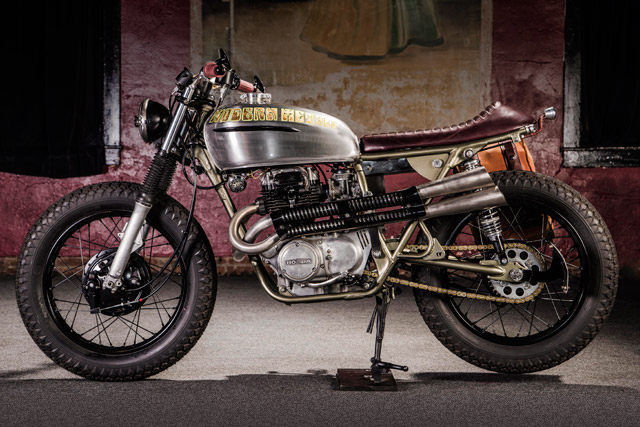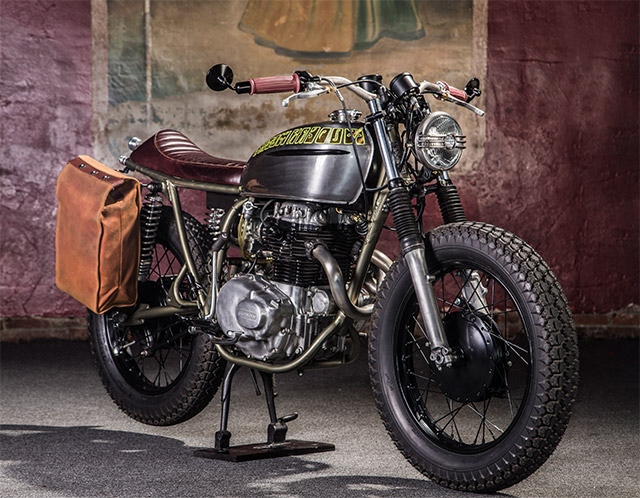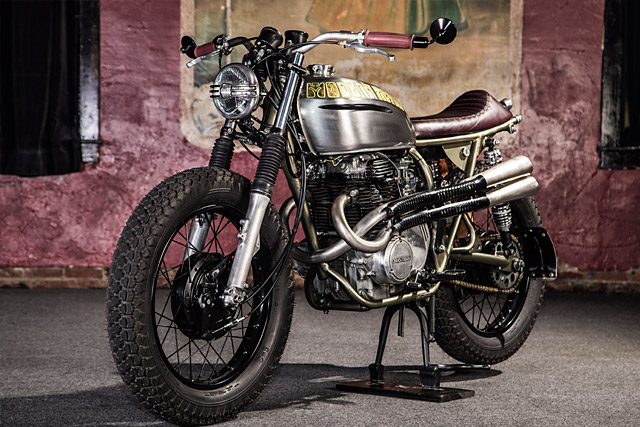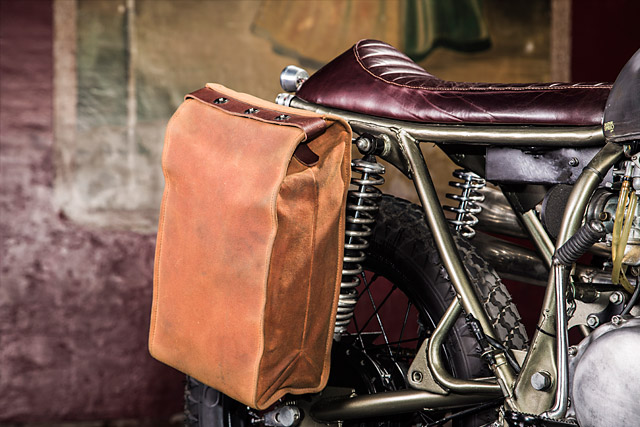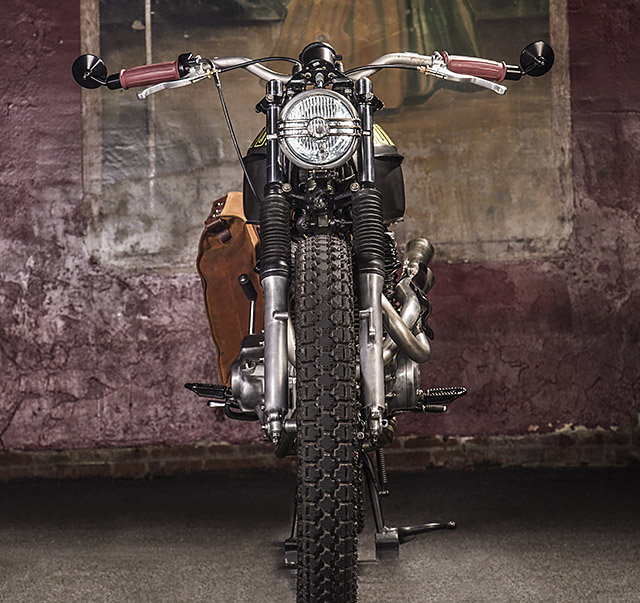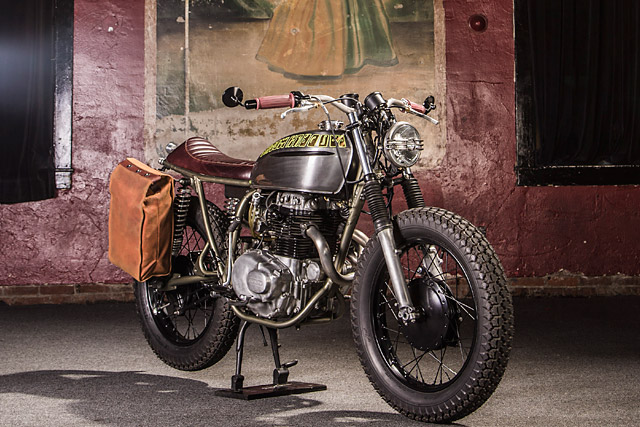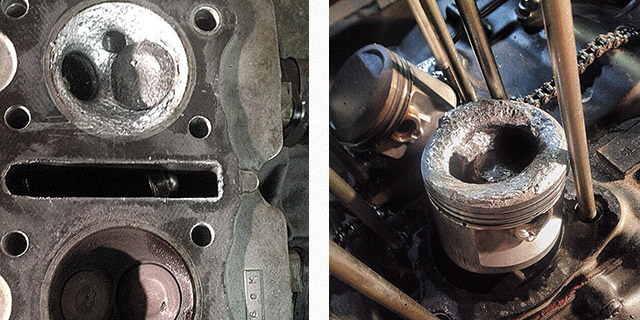
Now here’s a blast from the past. Suzuki Europe has jumped on the custom bandwagon and released images of a very tidy Bandit 1250, nicknamed ‘FatMile’. And one of the names behind the project is none other than Hans A. Muth, the legendary designer who rose to fame as BMW’s chief of styling.
Muth’s first association with Suzuki was nearly four decades ago. After leaving BMW, he set up the design team that created the original 1981 Katana—one of the most controversial motorcycles of all time.

The Bandit could never be called a design icon, but it’s much loved in Europe. It’s Suzuki’s equivalent of the Yamaha XJR1300: a reliable big-bore streetbike with bucketloads of character. The basic design hasn’t been updated for years, so it’s the ideal candidate for a custom job.
Young designer Daniel Händler did the bulk of the work on the Bandit, and a fine job he’s done too. The biggest change is a GSX-R front-end swap, including the triple trees, forks and brakes. The forged alloy wheels are from high-tech German specialist PVM, and the brake levers are from cult Swedish brand ISR.

The power output of a Bandit is very conservatively rated at 98 hp, but this one is probably putting out closer to 120. There’s an ECU remap and the stock headers are now hooked up to slinky Urban Killer mufflers from Cobra, another German brand.
The rear frame has been modified with a steeper kick-up, and clad with a custom fiberglass tail unit. There’s a matching belly pan too, but the tank is stock—apart from the leather panel upgrade.

The paint is in Suzuki’s classic blue and white colors, with Kellermann (lighting), Rizoma (grips, pegs) and Motogadget (speedo) providing the finishing touches.

FatMile will be officially unveiled this weekend at Glemseck 101, the biggest café racer festival in Europe.
It might not be as radical as the original Katana, but it’ll be much faster—and some would say easier on the eye, too.
Images by Sven WDMYR at Wheels of Stil | Suzuki Germany | Glemseck 101

The post Hans Muth and the Suzuki Bandit FatMile appeared first on Bike EXIF.






















